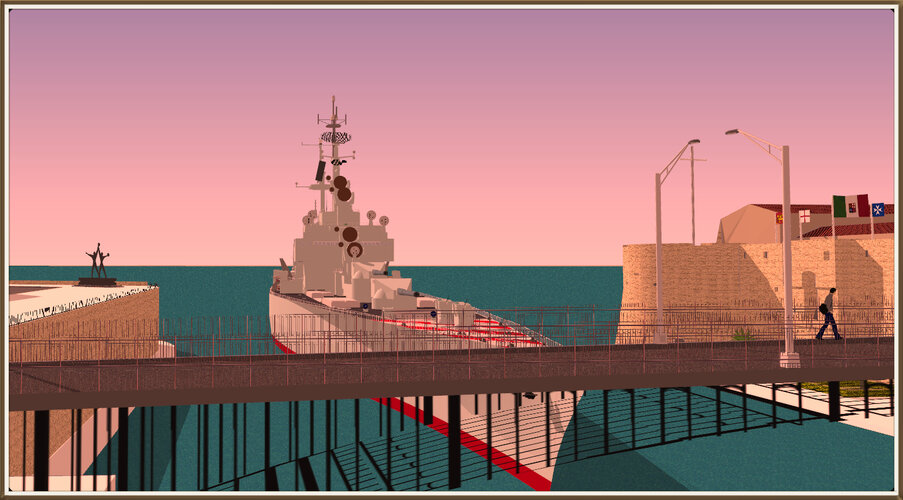Dilandu
I'm dissatisfied, which means, I exist.
That's my recent (well, relatively - I made it during spring) alternate history project - an Italian Cold War era missile battleship, the "Lepanto". This ship is from the AU, when Mussolini was quicker to understood that the war is lost, and approached Allies himself to get Italy out of the war. So Italy was more unified and better prepared to resist German intervention in 1943, Italian Navy and Air Force (Reppublicana Marina and Reppublicana Aeronautica) participated in Allies Indian Ocean offensive toward Singapore in 1944-1945, and Mussolini himself lived the rest of his days peacefully under house arrest.
The full description and story could be found in my LiveJournal (on Russian), here I just decided to post a short description:

The "Lepanto"-class battleships were designed to replace ageing "Reppublicana Marina" battleships of "Littorio"-class and "Andrea Doria"-class. The experience of fighting in the Med and on Indian Ocean during the war persuaded Italian admirals, that big, durable warships still are valuable parts on modern navy. Initially, they planned basically a big missile cruiser, armed with a large battery of supersonic anti-ship missiles, medium-range SAM's and twin 135-mm DP cannons; but sucsessfull experiments with 381-mm autoloading cannon caused them to re-think the design to fit a bigger artillery.

The displacement of Lepanto-class battleship is about 28.000 tons. It is powered by COSAG - Combined Steam and Gas - powerplant. Two Ansaldo steam turbines, powered by four Foster Wheeler type D boilers provide 60.000 h.p. for cruising; for speed dashes and quick movement, four gas turbines could be linked to the shafts, providing 80.000 h.p. of additional power. The max speed of Lepanto-class is 30 knots. Range on economy 17-knot speed is up to 5000 nm.

The main artillery armament of the ship is two single-gun turrets with 381-mm/50 Model 1958 «Rapido» guns. Those guns are essentially a modified Model 1939 guns, with reduced muzzle velocity, Sweden additive-analogue introduced to improve barrel service life, and fully automatic one-cycle loading (i.e. both shell and charge are pushed in by one rammer action). The rate of fire is about 6 shots per minute (one shot each 10-12 seconds) while using the prepared load in turret, and 4 shots per minute (one shot each 15 second) with shells being loaded from magazines.

The main missile armament is sixteen Thyrus supersonic ramjet anti-ship missiles. Eight missiles are placed in "coffin"-type loaders in bow part of the ships - four per broadside - and eight more are stored in two-tier magazines between the launchers. The missile itself is Mach 2.5 supersonic, liquid-fuel ramjet with 350 km range on 25 km altitude; they are equipped with 750-kg HE/shaped charge or nuclear (American Mk-7 or French AN-22) warhead.
The missile guidance is radar-based, with "man in the loop" command datalink from the ship - so operators could discriminate the targets, filter the decoys and order the missiles to lock on specific targets. The missiles could attack from both near-vertical dive and boost-glide dive, as well as perform a flanking maneuver to attack the target from several pre-set directions. Air defense penetration is aided by the automatic chaff dispersers and vertical evasion maneuvering during terminal approach.


The air defense missile armament constited of American-provided RIM-2 Terrier missiles. Two guided missile launch systems are installed on the rear in superfiring position. The lower one system is of GMLS Mk-10 Mod.5 type (with two loading drums) and the upper one is of GMLS Mk-10 Mod.2 type with four loading drums. The total missile load is 120 missiles, both of RIM-2 Terrier and RUR-5 ASROC variety.
The Lepanto-class battleship is equipped with three pairs of AN/SPG-55 fire control radars, of modified variery. The Italian-designed digital fire control system named "Lanistas", based on Marconi-Olivetti designed computer, perfored automatic tracking of about a dozen of target, locking radars on them and missile fire with minimal time between engagement. A RM/SPS-768B 2D-search radar is used to early warning, and AN/SPS-52А 3D radar is used for target tracking and identification.

The secondary artillery armament consists of ten 76-mm 76-mm/62 «Allargato», aimed by six RM/SPG-70 radars (one for each gun pair and one reserve)

The anti-submarine armament consists of two K113 "Menon" salvo depth charge throwers and two triple tube torpedo launchers for wire-guided G62ef Canguro torpedoes (a version of German G7e electric torpedo, with warhead replaced by American Mark-44 anti-submarine torpedo).

The Lepanto-class battleship is equipped with box-like protection system. The vital parts - gun and missile magazines, command center, and gas turbines - are put in steel armored boxes, protected by two-layer sides (25 + 125 mm) and 100 mm armored deck. The defense is optimised against shaped-charge missile hits, and designed to ensure ship's survivability in case of at least two direct hits by one-ton supersonic warheads. All magazines are equipped with automatic fire suppression systems and blow wenting hatches, designed to prevent catastrophic detonation. The ABC protection system includes washdown, internal pressurization and overpressure protection system, to ensure that radioactive dust would not be blown into the ship.

The full description and story could be found in my LiveJournal (on Russian), here I just decided to post a short description:
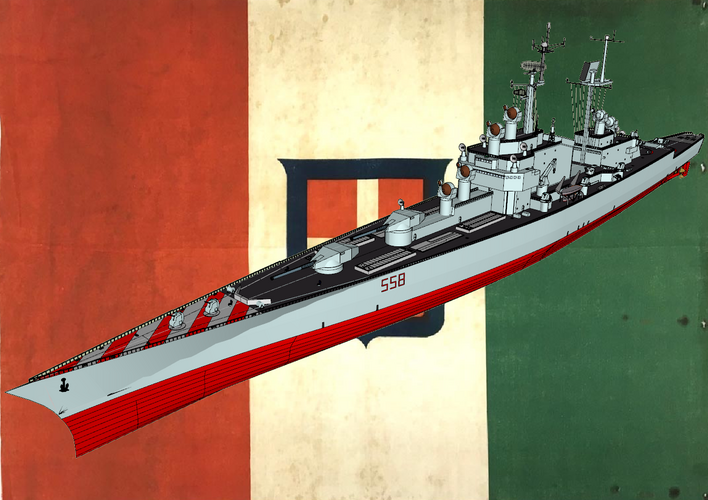
The "Lepanto"-class battleships were designed to replace ageing "Reppublicana Marina" battleships of "Littorio"-class and "Andrea Doria"-class. The experience of fighting in the Med and on Indian Ocean during the war persuaded Italian admirals, that big, durable warships still are valuable parts on modern navy. Initially, they planned basically a big missile cruiser, armed with a large battery of supersonic anti-ship missiles, medium-range SAM's and twin 135-mm DP cannons; but sucsessfull experiments with 381-mm autoloading cannon caused them to re-think the design to fit a bigger artillery.
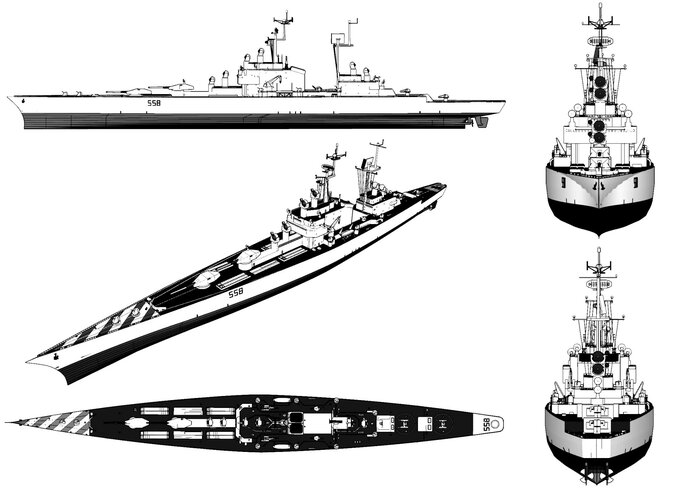
The displacement of Lepanto-class battleship is about 28.000 tons. It is powered by COSAG - Combined Steam and Gas - powerplant. Two Ansaldo steam turbines, powered by four Foster Wheeler type D boilers provide 60.000 h.p. for cruising; for speed dashes and quick movement, four gas turbines could be linked to the shafts, providing 80.000 h.p. of additional power. The max speed of Lepanto-class is 30 knots. Range on economy 17-knot speed is up to 5000 nm.
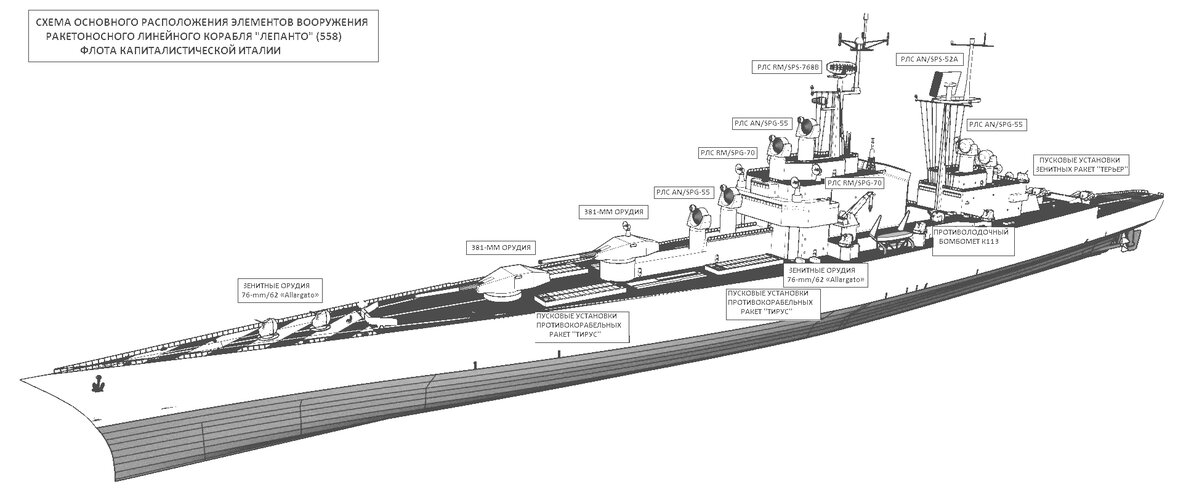
The main artillery armament of the ship is two single-gun turrets with 381-mm/50 Model 1958 «Rapido» guns. Those guns are essentially a modified Model 1939 guns, with reduced muzzle velocity, Sweden additive-analogue introduced to improve barrel service life, and fully automatic one-cycle loading (i.e. both shell and charge are pushed in by one rammer action). The rate of fire is about 6 shots per minute (one shot each 10-12 seconds) while using the prepared load in turret, and 4 shots per minute (one shot each 15 second) with shells being loaded from magazines.
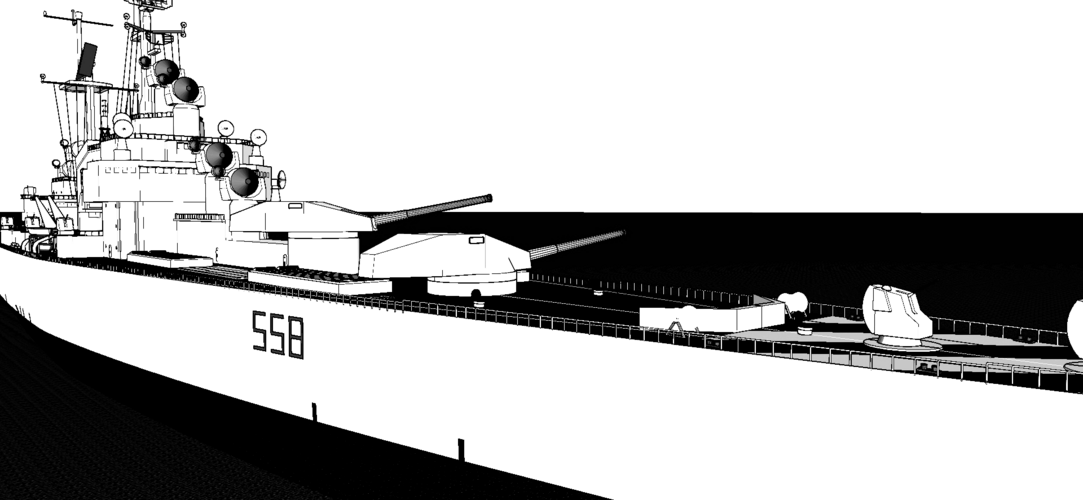
The main missile armament is sixteen Thyrus supersonic ramjet anti-ship missiles. Eight missiles are placed in "coffin"-type loaders in bow part of the ships - four per broadside - and eight more are stored in two-tier magazines between the launchers. The missile itself is Mach 2.5 supersonic, liquid-fuel ramjet with 350 km range on 25 km altitude; they are equipped with 750-kg HE/shaped charge or nuclear (American Mk-7 or French AN-22) warhead.
The missile guidance is radar-based, with "man in the loop" command datalink from the ship - so operators could discriminate the targets, filter the decoys and order the missiles to lock on specific targets. The missiles could attack from both near-vertical dive and boost-glide dive, as well as perform a flanking maneuver to attack the target from several pre-set directions. Air defense penetration is aided by the automatic chaff dispersers and vertical evasion maneuvering during terminal approach.
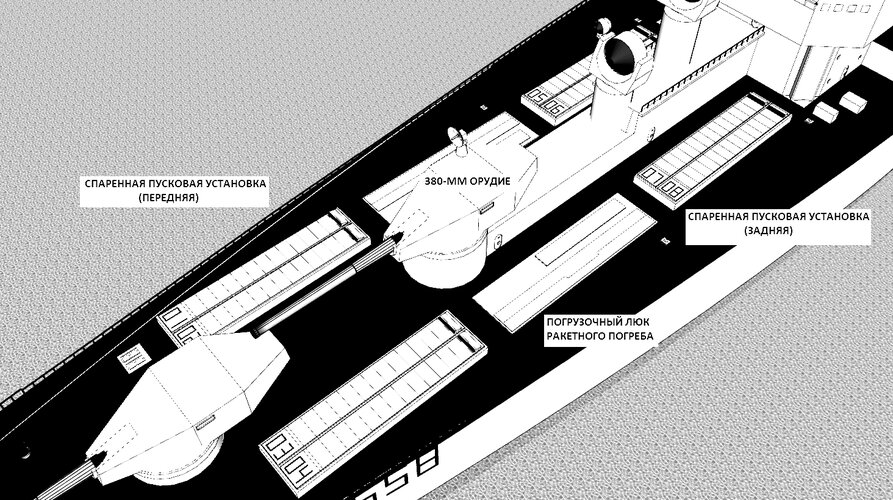
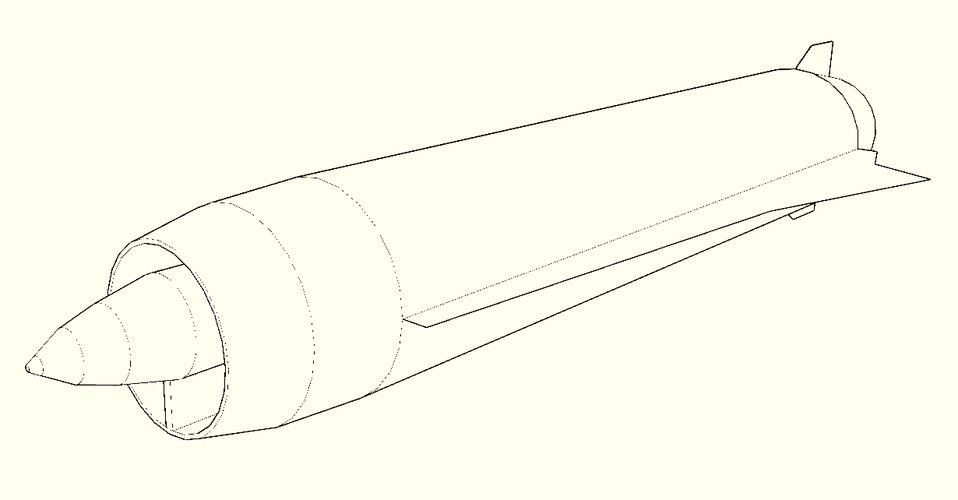
The air defense missile armament constited of American-provided RIM-2 Terrier missiles. Two guided missile launch systems are installed on the rear in superfiring position. The lower one system is of GMLS Mk-10 Mod.5 type (with two loading drums) and the upper one is of GMLS Mk-10 Mod.2 type with four loading drums. The total missile load is 120 missiles, both of RIM-2 Terrier and RUR-5 ASROC variety.
The Lepanto-class battleship is equipped with three pairs of AN/SPG-55 fire control radars, of modified variery. The Italian-designed digital fire control system named "Lanistas", based on Marconi-Olivetti designed computer, perfored automatic tracking of about a dozen of target, locking radars on them and missile fire with minimal time between engagement. A RM/SPS-768B 2D-search radar is used to early warning, and AN/SPS-52А 3D radar is used for target tracking and identification.
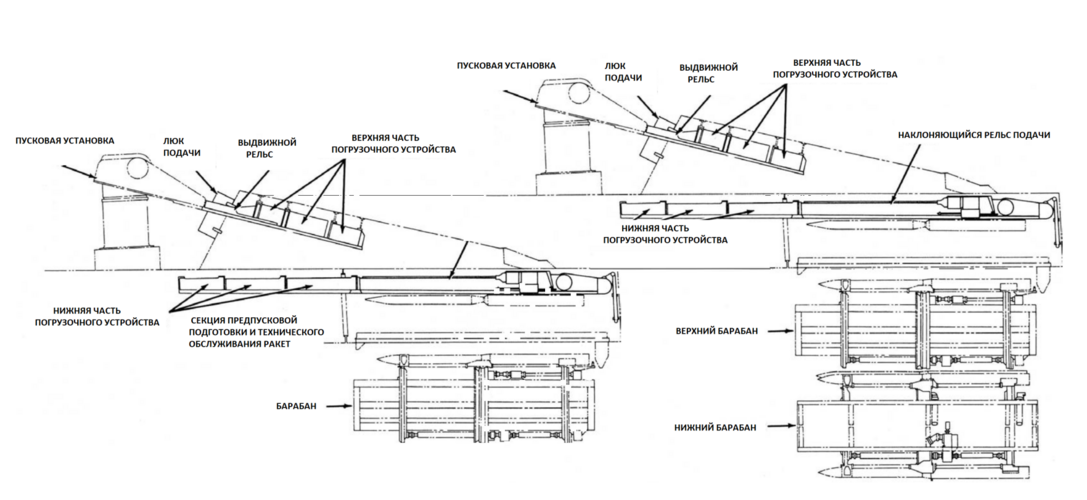
The secondary artillery armament consists of ten 76-mm 76-mm/62 «Allargato», aimed by six RM/SPG-70 radars (one for each gun pair and one reserve)
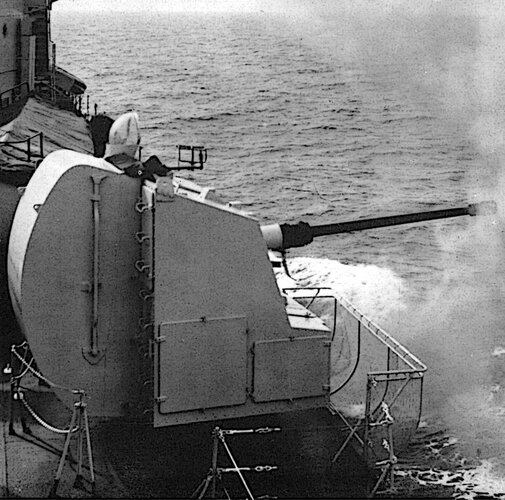
The anti-submarine armament consists of two K113 "Menon" salvo depth charge throwers and two triple tube torpedo launchers for wire-guided G62ef Canguro torpedoes (a version of German G7e electric torpedo, with warhead replaced by American Mark-44 anti-submarine torpedo).
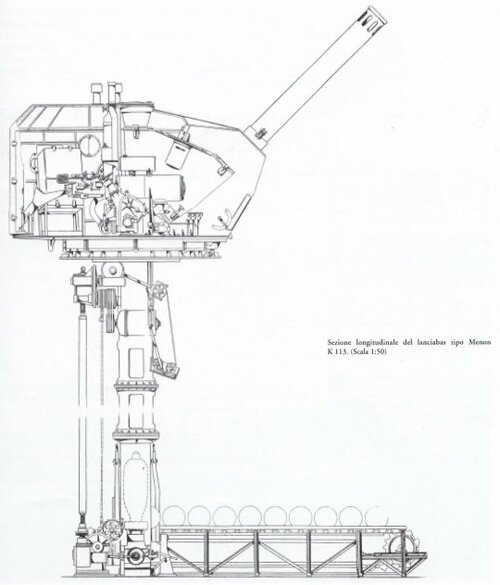
The Lepanto-class battleship is equipped with box-like protection system. The vital parts - gun and missile magazines, command center, and gas turbines - are put in steel armored boxes, protected by two-layer sides (25 + 125 mm) and 100 mm armored deck. The defense is optimised against shaped-charge missile hits, and designed to ensure ship's survivability in case of at least two direct hits by one-ton supersonic warheads. All magazines are equipped with automatic fire suppression systems and blow wenting hatches, designed to prevent catastrophic detonation. The ABC protection system includes washdown, internal pressurization and overpressure protection system, to ensure that radioactive dust would not be blown into the ship.
